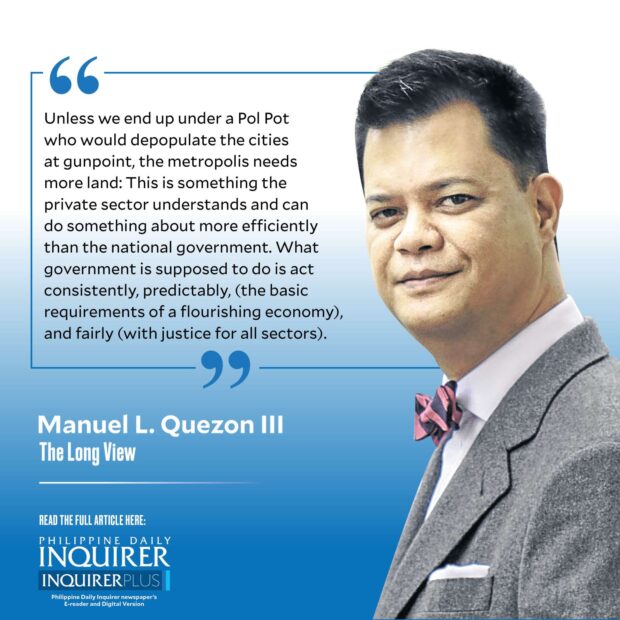
It’s the US Embassy that’s been credited with having the wherewithal to get the government to slam on the brakes concerning reclamation as it found itself in danger of being engulfed by a project, and alarmed over the involvement of subsidiaries of Chinese state firms in some projects—weakening America’s ability to ostracize state firms. Result? A blanket moratorium ordered by the President, with the environment secretary pledging a holistic, Filipino-dominated, multisectoral review of projects taken as a whole and not piecemeal.
Back in 2019, a workshop was conducted on how to dispense science-based advice to government, and hopefully, the lessons are now being applied. The bay, after all, is a system that is much larger than we normally imagine: three regions, eight provinces, and 178 LGUs, with the port of Manila itself covering an aggregate area of 100 square kilometers.
It will inevitably boil down to a debate over reclamation: Should it even take place? Something to bear in mind: Much of what we consider attractive about Manila dates to earlier reclamations. A few years ago, as I worked with my team to produce a map illustrating the British invasion of Manila in 1762, I was struck by how much of what we take for granted in Manila is actually reclaimed land. The beach and shoreline, then, of Manila roughly follow today’s Bonifacio Drive along Intramuros and the vicinity of A. Mabini in Malate. Put another way, the entire Port Area, and the vicinity of the Quirino Grandstand up to the old Army and Navy Club dates to the first decade or so of the 20th century, while the US Embassy compound and what is now the service road of Roxas Boulevard in Pasay, date back prewar Commonwealth reclamation. Postwar property owners in Pasay waged an unsuccessful campaign to block the further widening of Roxas Boulevard. All these were considered symbols of modernity and, in fact, created the seaside promenade along Roxas Boulevard recalled nostalgically by the older generation.
Back in 2020, researching Imelda Marcos and the CCP, I was struck with how nimbly she took over as her own brainchild, a scheme actually begun by a disgraced American tycoon, Harry Stonehill, who first conceived, and started, going beyond Roxas Boulevard and engaging in further reclamation in Manila Bay. He ended up deported in 1962 but for our purposes, the Stonehill and Marcos eras are one, creating the vast reclamations—88 hectares in Manila, where the CCP complex is, and 100 hectares in Pasay, where the GSIS and PNB are—that were semi-abandoned until the private sector finally turned them into viable developments.
Since the 1950s, objections to reclamation have been two-pronged: from current property owners afraid their land values will go down, and heritage advocates concerned landmarks and historic sites will vanish. Add to this more recent concerns over the environment, and you have a motivated, committed constituency ready to oppose any development. Government, for its part, has a track record of corruption which makes it easy to attack any project as motivated by private greed at public expense.
But an accompanying, harsh reality is that sudden stoppages, however well-meant, wreck the reputation of the country as a whole when it comes to investments. The effects aren’t just immediate, as the economy is slowing down, but also cumulative, adding to the many opportunities that are already being lost for attracting interest from foreign investors. Even the local market has gotten spooked, news from the stock market reveals.
We’re always told that at 71,263 inhabitants per sq km, Manila is the most densely populated city in the world (Pasay City is 29,815). The NCR as a whole has a population density 60 times higher than the national level. Unless we end up under a Pol Pot who would depopulate the cities at gunpoint, the metropolis needs more land: This is something the private sector understands and can do something about more efficiently than the national government. What government is supposed to do is act consistently, predictably, (the basic requirements of a flourishing economy), and fairly (with justice for all sectors). We are still stuck in using the shotgun approach which bruises as much as it loosely targets what’s supposed to be specifically addressed. Surely we can do better.
Email: mlquezon3@gmail.com; Twitter: @mlq3